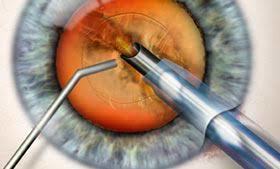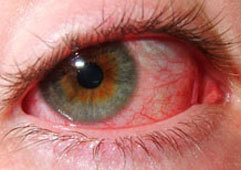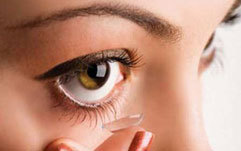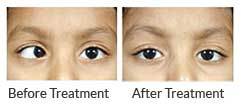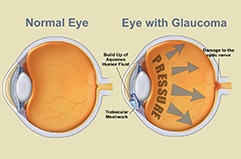Lasik
What is Lasik ?
LASIK ( Laser in situ keratomileusis ) is an advanced laser surgery that permanently eliminates your dependence on corrective eye glasses ( Spectacle) and/ or contact lenses with the resultant life style advantage . It is a treatment that reshapes the cornea in Microns with the help of laser in order to produce clear vision. The reshaping of the cornea improves the eyes focusing power and enhances patient’s visual acuity.
If you are planning / considering corneal refractive surgery you must :
Be at left 18 year of age , with stable refraction for past 6 month
Have healthy eyes that are free from any eye disease or corneal abnormalities ( E.g. Scar , infection )
Corneal thickness must be adequate ( more than 480 microns ) which will be evaluated by ophthalmologist (with the help of OCULYZER-II)
A complete retinal evaluation
RGP/ semi soft lenses must be discontinued 2 weeks prior to lasik
Soft contact lenses must be discontinued one week prior to lasik
When you should not undergo lasik?
If you have any connective tissue disorder ( E.g. rheumatoid arthritis ), Autoimmune ( e.g. SLE) & immunodeficiency diseases.
If you are pregnant or nursing
Keratoconus or any sign of corneal thinning.
When there are CONTRAINDICATION / LIMITATIONS for Lasik
Limitations of Lasik
Lasik can correct myopia up to -12,The higher the intended correction the thinner and flatter the cornea will be post-operatively.For LASIK one has to preserve a safe residual corneal stromal bed of at least 280 microns,preferably 300 micron.Beyond these limit there is an increased risk of developing corneal ectasia ( i,e corneal forword bulging ) due to thin residual cornea stromal bed bed which results in loss of visual quality.Therefore those who are having higher refractive error and thin corneal thickness,LASIK is contraindicated in such cases.
PHAKIC LENSES as an alternative for LASIK
Since yesteryear the only method for permanent vision correction was corrective laser eye surgery ( i.e LASIK,PRK ). With the advent of PHAKIC LENSE things have changed.Now you can enjoy a well defined vision correction that's sharper,cleaner,more vivid and has greater depth of dimension though your cornea is thin or though you have larger spectacle number.
What is PHAKIC INTRAOCULAR LENS
Phakic Intraocular lens is a special kind of intraocular lens that is implanted surgically in to the eye to correct myopia.They are called , 'PHAKIC' because the eye'snatural lens is left untouched.This is in contrast to intraocular lenses that are implanted in to eyes after the eye's natural lens has been removed during cataract surgery. Phakic intraocular lenses are indicated for patients with high refractive error when the usual laser option ( LASIK and PRK) for surgical correction are cotraindicated.
At our centre,we use IPCL amongst many other type of Phakic lenses.Intraocular Phakic Contact Lens ( IPCL) is like a soft contact lens,single piece posterior chamber phakic iol which can be inserted in to the eye through sub 2.8 mm incision to correct vision of the eye.
The lens is customized according to shape and size of each eye
The IPCL lens is implanted inside the eye between the iris and the natural lens.
It correct spherical. cylindrical or mixed spectacle numbers.
Once implanted in the eye, the IPCL stays indefinitely .It can be replaced or removed from the eye if your vision changes over a period of time.
Advantages of IPCL
A Vision with a new horizone
You will get a well defined vision correction that's sharper, cleaner, more vivid and has greater deapth and dimention
Pleasant Surprise
After a simple 15 minut OPD medical procedure, patient experience immediate improvement in the visual quality. In fact the the quality of vision achieved is the best among the other procedure available.
Designed to be forever but removable
It can be removed or replaced easily if necessary
Corneal tissue is not removed or reshaped
In IPCL medical intervention,procedure,no corneal tissue is removed or reshaped,unlike the corrective Lasik procedure whereby healthy corneal tissue is removed permanently.
Minimum recovery time
Recovery time is very less.with minimum discomfort
Invisible and Unnoticeable
IPCL is positioned between the iris and natural lens .It is invisible to patient and viewer.The fixed positioning of the IPCL allows it to work in complete harmony with your normal eye function.
The only way that you or anyone else comes to know its there is the improvement in your eye sight.You will neither be able to see nor feel the IPCL,once it is inside your eye.
Flexibility for future
When time passes ,and we grow older,our vision changes,Everyone will need a cataract surgery.A significant benefit with the IPCL is that you will have future options avalable to you,when the time comes.
The IPCL can be removed and replaced if your vision changes significantly.And you can have another procedure at any time.
Frequently Asked Questions on Reactive Surgery (Lasik )
Will my vision improve immediately
You should be able to see reasonably well within a few days after your procedure. If you have had a surface PRK procedure, Your vision may Fluctuate for next 1to 3 month . If you have had a lasik procedure, your vision is likely to stabilize around a month after the procedure.
What are the possible side effects of the procedure
Early side effect of any corneal procedure includes light sensitivity, glare & foreign body sensation in the eye. Sometimes procedure may result in undercorrection, or overcorrection may occur. Corneal haze can also occur in some patient
How do I know if I am a good candidate for lasik
Patient who are 18 years of age and older, having healthy eyes that are free from retinal problem, corneal scars and any eye disease.
If the effect of lasik is permanent
Yes, the effect of treatment is permanent.
Will I need reading glasses after the treatment ?
If you are 40 year of the age and more than that, then you will need presbyopic glasses for reading. The lasik treatment does not correct or prevent presbiopia.
How soon after the treatment can I bath & take a shower?
You should not shower for one week but you can take bath on next day. Avoid getting soap or water directly in to your eyes. Avoid rubbing your yees during the 1st month after surgery.
When can I drive after the treatment ?
Don’t drive on the same day . After that you can drive when you feel comfortable for safe driving.
How soon can I use eye makeup ?
You can make up your eyes 4 weeks after treatment but take care to avoid infection.
How soon I can swim ?
Don’t swim for at lease 2-4 wk after treatment
What kind of anaesthesia is used during the treatment ?
Topical anaesthesia i.e. numbing eye drops are used.
Can both eye be treated at the same time?
In lasik both eyes are treated at the same time
Does lasik Hurt ?
Lasik is the painless treatment . You will feel pressure on and around the eye during treatment. Some patient feel foreign body sensation for a day after treatment.
Will my eyes be patched?
No but clear protective eye shields or black goggles will be placed following treatment.
Will I need to wear spectacles or contact lenses after procedure?
Both surface PRK & Lasik are designed to allow you to discontinue the use of your corrective lenses. In some patient with high refractive errors and in those over 40 years of age corrective lenses may still be required. In some patient however , it may be possible to perform a second refractive procedure to correct a residual refractive error.
Is the lasik procedure covered by insurance?
Lasik is consider a elective / cosmatic surgery and it is not covered by many health insurance plans. However you can contact & ask about to your insurance agency for the same.
When can I resume my normal activities ?
If you have had a surface PRK , you will be able to return to work within three to four days of surgery . If you have had lasik procedure you can return to work on the following day. Eye medication should be continued during working hours as instructed by the surgeon. Direct eye contact with water or rubbing of the eye or any type of trauma should be avoided for at least one week following Lasik
What is the criteria for Lasik surgery?
Age of the patient should be over 18 year. Spectacle of the patient should be stable for at leans six month.
Corneal thickness more than 480 microns which will be evaluated by us - with Oculyzer -II.
A complete retinal evaluation
RGP / Semi soft lens use discontinued 3 weeks prior to Lasik
Soft contact lens use to be discontinued 2 weeks before Lasik.
Is lasik a safe procedure ?
Yes if the requisite tests and above criteria is followed
If done after a through screening
use of latest equipments
Done under the care of expert hands
It is an FDA approved procedure.
Up to what number can lasik correct
A wide range of refractive error can be corrected including near sightedness, far Sightedness & astigmatism.
Near sightedness – minus 1 to minus 12
Far sightedness - plus 1 to plus 6
Astigmatism ( cylindrical ) – up to 6 diopter cylinder.
Our center is equipped with worlds safest, fastest OptiLasik Ex 500 Machine and also by a Oculyzer 2 to precisely evaluate your precious eye.


